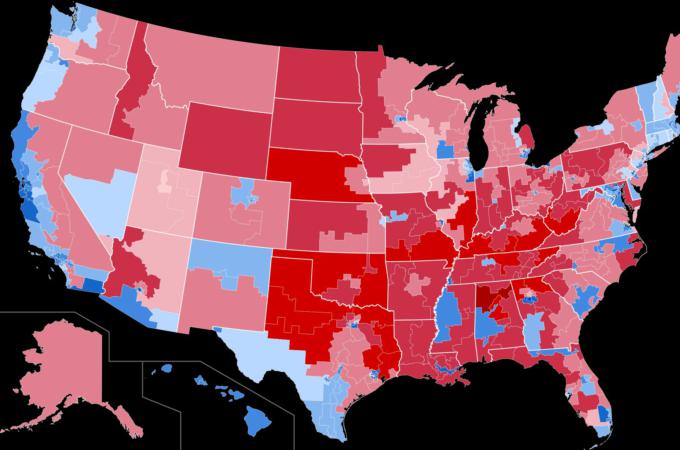Caring for 'the other America'
In the wake of Donald Trump's election as president, much has been made of the voters he attracted, usually identified as white, male, small town and rural, working class.
While such statistical generalizations obscure the fact that many who did not fit that stereotype also voted for him, it did attract a great deal of attention to that "other America" that resides between the crowded coastal states and media centers.
Books like "Hillbilly Elegy" by J.D. Vance became must-reads, and pundits were making postelection resolutions to get out of their media bubbles and visit that "other America" that so shocked them on Election Day.
Looking at the electoral map of red (Republican) and blue (Democrat) states, one immediately sees the huge scarlet swath that included the South, Midwest and upper Midwest -- what is often dismissively referred to as flyover country. Those journalists wanting to see what makes this part of America tick clearly have a lot of ground to cover.
I grew up in California and now reside on the East Coast, but for many years I lived in Indiana, one of those red flyover states.
I've enjoyed the riotous ethnic and racial diversity of the Washington area, and the church here reflects this diversity. My parish has a weekly Mass for Nigerian Catholics, throbbing with different rhythms, vivid colors and no concern that it all gets wrapped up in an hour. Nearby, a parish serving a large Hispanic community is standing room only every Sunday.
The needs of these communities are great, and the church is keenly aware of them. It has sought to help immigrant families and to protect their rights. The bishops know personally young Dreamers brought to this country and growing up in their parishes, and they know also the church's strong biblical commitment to the poor and the stranger.
Yet I felt privileged to have experienced my Midwestern parish as well. There were high levels of engagement and stewardship, a simple, heartfelt appreciation of community, a sincerity and generosity that helped me appreciate the values and the spirit of the heartland.
Before the 2016 election, the Center for Applied Research in the Apostolate, a Catholic social research organization, summarized its research about "town and country Catholics." It contrasted folks living in coastal states or major urban areas with folks in noncoastal states and rural areas.
CARA reported that Catholics living in rural and small town, noncoastal communities had higher rates of religious practice, higher rates of parish involvement, higher rates of financial support of their parish, higher rates of youth engagement as well.
"There may be fewer in the pews in rural America, but they are more connected to their faith and parish life than those anywhere else in the country," the report concluded.
The heartland is ailing, however. It is losing jobs. Its young people are migrating to larger urban areas. Many of the afflictions of the city fester also in the country.
America's small towns have been battered by the decline in families, with divorce and cohabitation increasingly common. It is beset by problems like opioid addiction. One pastor told me his church was experiencing almost a funeral a week due to drug overdoses.
Catholics have deep roots in these communities, and the church is uniquely positioned not only to serve the needs of its faithful people there but also to give voice to their suffering, as it does for the immigrant, the refugee, the city dweller.
The 2016 election may have caught political observers by surprise, but the church understands its call is to serve all the marginalized and the hurting, whatever their zip code.
- Greg Erlandson is director and editor-in-chief of Catholic News Service.



















